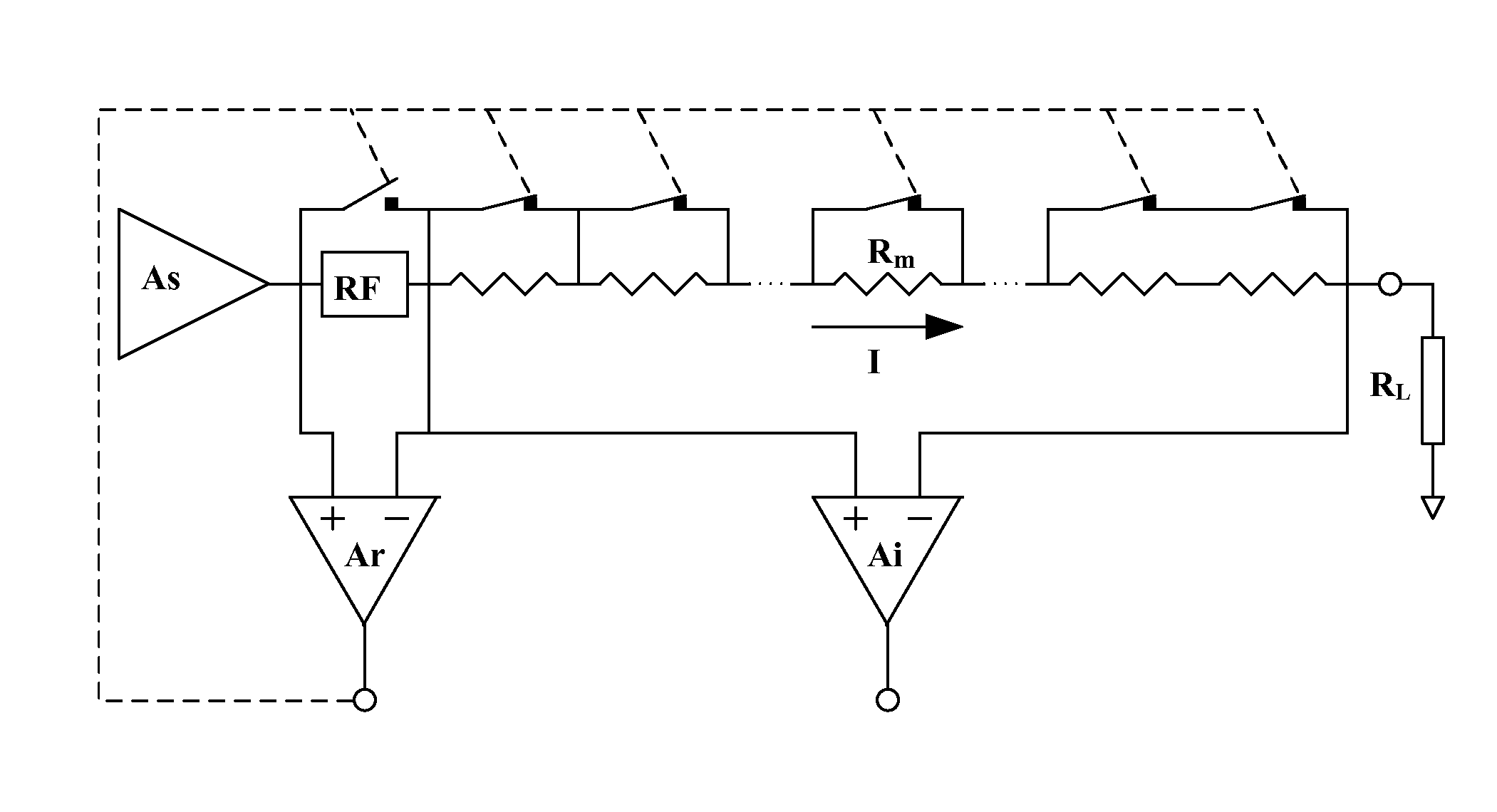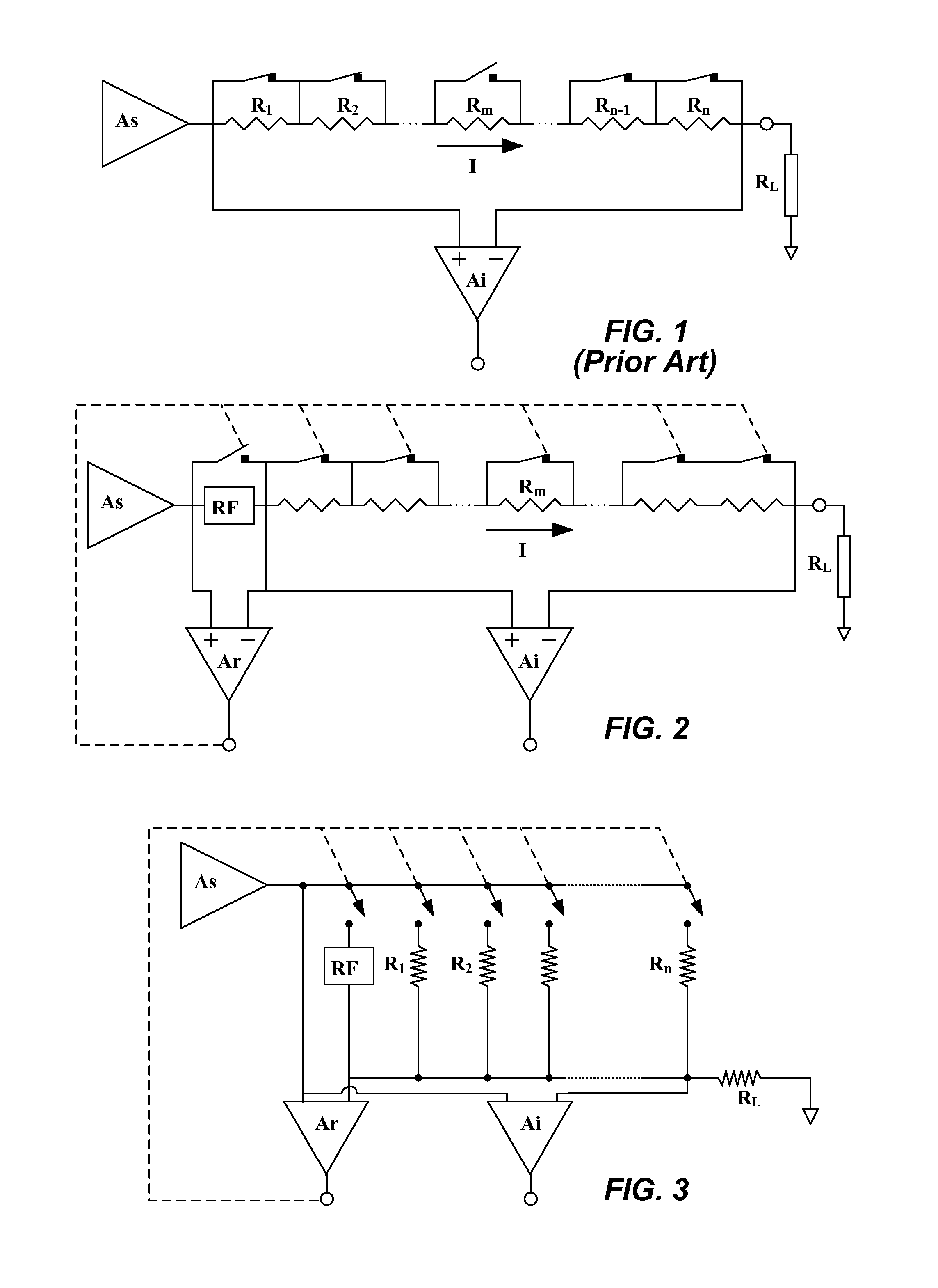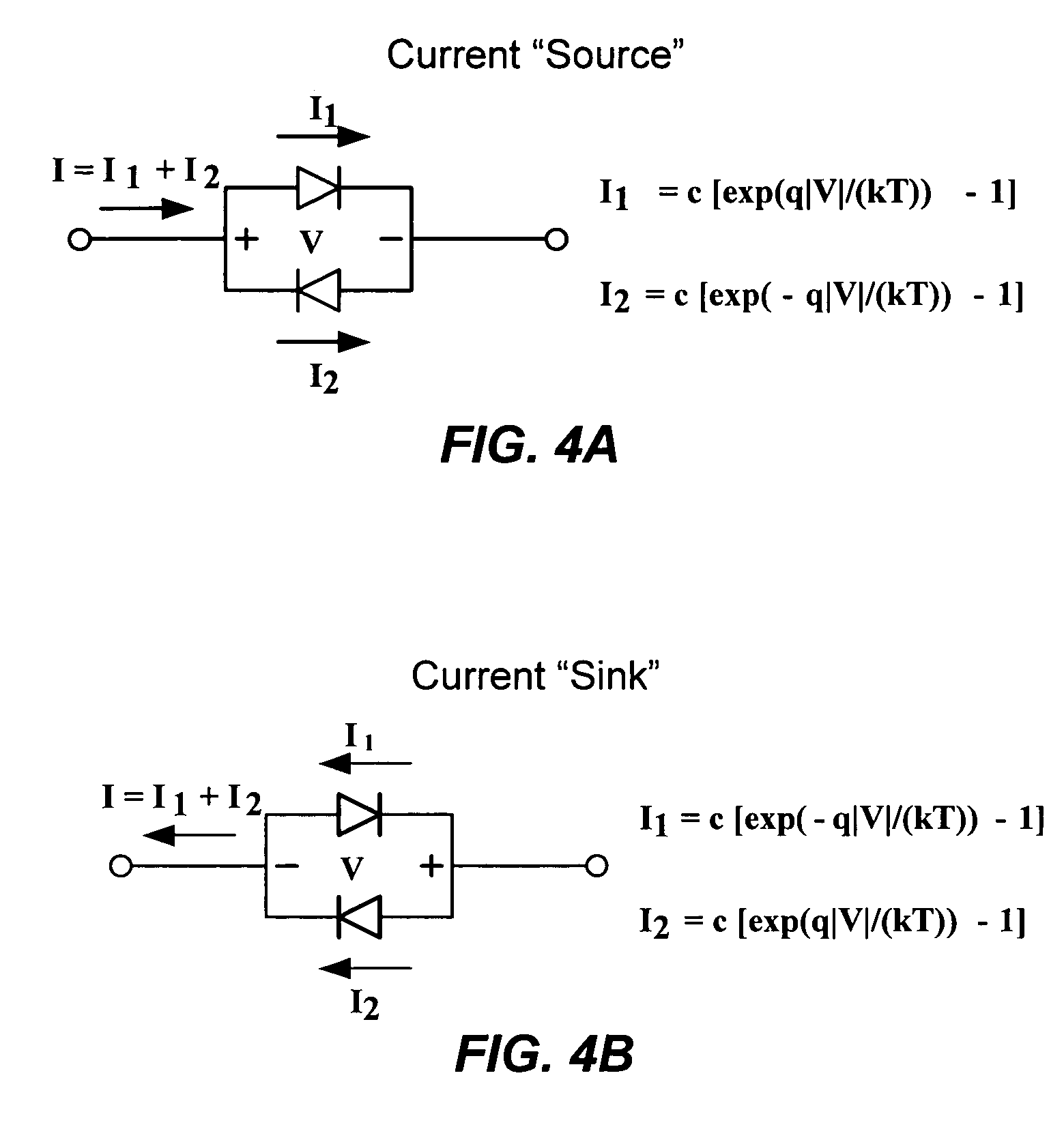Automatic range finder for electric current testing
a technology of electric current and automatic range finder, which is applied in the direction of individual semiconductor device testing, measurement using dc-ac conversion, instruments, etc., can solve the problem of taking more time, achieve high base resistance, overcome high current limitation, and lower resistance
- Summary
- Abstract
- Description
- Claims
- Application Information
AI Technical Summary
Benefits of technology
Problems solved by technology
Method used
Image
Examples
Embodiment Construction
[0016]Most high accuracy current measuring systems (SPTs in particular) utilize sensing element(s), connected in series with the load. In general, the measured magnitude is the resulting voltage across the sensing element, while its a-priori known current vs. voltage relation is used to determine the current. Typically, high precision resistors are the preferred sensing elements, since: (i) they follow a linear current vs voltage relation (Ohm's law) almost perfectly; (ii) they are hardly influenced by temperature; (iii) they are easily available over a wide range of values, as required for the different sub-ranges; and (iv) overall, their performance to price ratio is excellent. However, since high voltage drops across such resistors limit the maximum voltage available to the load on one hand, while very low voltage drops compromise measurement accuracy on the other hand, most current sub-ranges cover only one or two orders of magnitude. This translates to many current sub-ranges, ...
PUM
 Login to View More
Login to View More Abstract
Description
Claims
Application Information
 Login to View More
Login to View More - R&D
- Intellectual Property
- Life Sciences
- Materials
- Tech Scout
- Unparalleled Data Quality
- Higher Quality Content
- 60% Fewer Hallucinations
Browse by: Latest US Patents, China's latest patents, Technical Efficacy Thesaurus, Application Domain, Technology Topic, Popular Technical Reports.
© 2025 PatSnap. All rights reserved.Legal|Privacy policy|Modern Slavery Act Transparency Statement|Sitemap|About US| Contact US: help@patsnap.com



